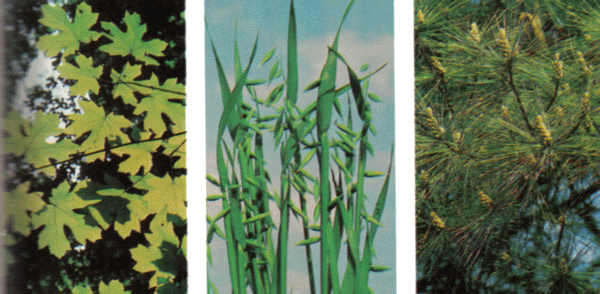 SKC Films Library |
| SKC Films Library >> Science >> Botany >> Plant Anatomy |
| Leaves The main food-making parts of almost all plants, leaves capture energy from sunlight and use it to make food out of water from the soil and carbon dioxide. This food provides plants with energy to grow, to produce flowers and seeds, and to carry on all their other activities.
Leaves vary tremendously in appearance, but most can be divided into three groups according to their basic shape. (1) Broad leaves are the type of leaf that most plants have. These leaves are fairly wide and flat. Plants that have such leaves include maple and oak trees, pea plants, and rosebushes. (2) Narrow leaves are long and slender. Such leaves grow on grasses. Grasses include not only lawn grasses but also corn, oats, wheat, and other cereal grasses. Lilies, onions, and certain other plants also have narrow leaves. (3) Needle leaves grow on firs, pines, spruces, and most other cone-bearing trees and shrubs. Such leaves resemble short, thick sewing needles. A few other kinds of cone-bearing plants, including certain cedars and junipers, have scalelike leaves. Most leaves grow 1 to 12 inches long. Some plants, however, have huge leaves. The largest leaves grow on the African raffia palm. The leaves of this tree measure up to 65 feet long. The giant water lily of South America has round, floating leaves up to 6 feet across. In contrast, some plants have extremely small leaves. The true leaves of asparagus plants, for example, are so tiny that they are hard to see without a magnifying glass. In these plants, the stems, not the leaves, produce food. SOURCE |
| SKC Films Library
>> Science >> Botany >> Plant Anatomy This page was last updated on 10/30/2017. |
